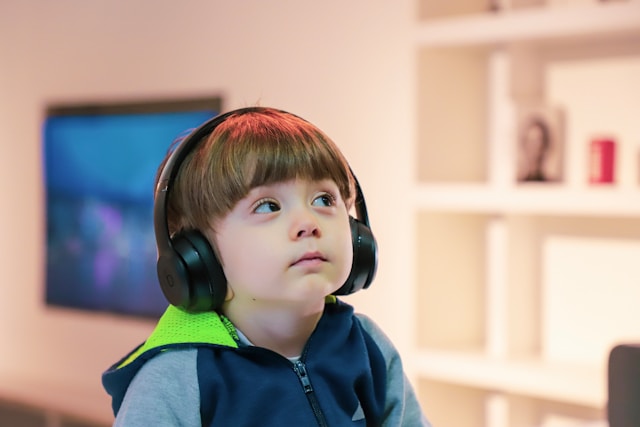Behavioral signs are often the first clues that someone is experiencing sensory differences. These behaviors are ways the brain and body respond to sensory input—either by trying to reduce overwhelming sensations or to get more stimulation. Understanding them helps us, caregivers, teachers, and peers respond with empathy rather than frustration.
Behavioral signs are often the first clue that someone is experiencing sensory differences. Some of these signs are obvious: covering ears at loud sounds, avoiding certain foods or textures, constant movement, fidgeting, or struggling with transitions. Other signs are more subtle but just as important to notice. Squinting in bright light, avoiding eye contact, or seeking deep pressure—through tight hugs, leaning on objects, or using weighted blankets—are all ways the nervous system tries to feel balanced.
These behaviors are not just quirks—they are the body’s way of communicating sensory needs. So, let’s learn a little more about them.
How Sensory Issues Are Expressed
Some people are constantly moving or fidgeting, tapping a pencil, bouncing a leg, or spinning around. This isn’t misbehavior—it’s their body’s way of getting the sensory input it needs to feel balanced. Difficulty with transitions, like moving from one activity to another, can also show up because sudden changes feel overwhelming.
Even small behaviors, like squinting in bright light, seeking deep pressure, or appearing clumsy, can hint at sensory needs. Recognizing these signs helps us create supports like quiet spaces, sensory breaks, or comfy clothing to make daily life easier and more comfortable. Let’s see a few examples.
Covering Ears or Avoiding Noises
Many people with hypersensitivity to sound will cover their ears, flinch at sudden noises, or try to leave noisy environments. For example, a child in a classroom might wince when the fire alarm goes off or struggle to focus during a noisy lunch period. This is the nervous system’s way of saying, “Too much input right now!”
Picky Eating or Avoiding Certain Textures
Food textures, smells, or tastes can feel overwhelming for someone with sensory sensitivities. A child might refuse mushy foods, avoid certain fruits or vegetables, or insist on foods prepared in very specific ways. Similarly, textures in clothing or bedding can trigger discomfort—scratchy fabrics, tight collars, or seams may lead to refusal to wear certain clothes.
Constant Movement or Fidgeting
Hyposensitivity or sensory-seeking behaviors often show up as constant movement. Someone might bounce their leg, tap a pencil, spin in circles, or frequently get up and walk around. These movements help regulate the nervous system, provide needed sensory input, and can even improve focus and attention.
Difficulty with Transitions
Changes in routine, environment, or activity can be particularly challenging. A child might become anxious or resistant when moving from one activity to another, not simply because they are “stubborn,” but because sudden changes overwhelm their sensory system. Predictable routines and gradual transitions can make these moments much easier.
Other Subtle Signs of Sensory Issues
Some behavioral signs of sensory issues are more subtle and easy to overlook. For instance, squinting in bright light or shielding the eyes can indicate sensitivity to visual stimuli, while avoiding eye contact might not be shyness—it could be that social interaction combined with visual and auditory input feels overwhelming. Similarly, seeking deep pressure through tight hugs, leaning on objects, or using weighted blankets is often a way to feel grounded and regulated, not a deliberate neediness.
Body awareness, or proprioception, can also affect behavior in less obvious ways. Someone might appear clumsy, bump into furniture, misjudge distances, or drop objects frequently because their brain is not fully registering where their body is in space. Fine motor tasks, like writing or buttoning clothes, can also be more challenging.
Other subtle signs might include: tapping or drumming fingers, shifting weight constantly, rocking back and forth, or frequently adjusting clothing. Even small repetitive movements or fidgeting can be a form of sensory self-regulation. Recognizing these less obvious behaviors is important because they’re often the body’s way of coping with sensory input. Understanding them allows caregivers and educators to provide appropriate support, creating environments where individuals feel safe, comfortable, and able to focus.
A Quick List of Behavioral Signs
Squinting in bright light, avoiding eye contact, or seeking deep pressure—through tight hugs, leaning on objects, or using weighted blankets—are all ways the nervous system tries to feel balanced. Difficulties with body awareness, or proprioception, can make someone appear clumsy, bump into furniture, drop objects, or struggle with fine motor tasks like writing or buttoning clothes.
Here’s a comprehensive, reader-friendly version of the behavioral signs of sensory issues, combining both obvious and subtle signs.
More “Obvious” Signs
- Covering ears or flinching at loud sounds.
- Avoiding certain foods or textures (picky eating, refusing scratchy clothing).
- Constant movement or fidgeting (bouncing legs, tapping fingers, spinning).
- Difficulty with transitions between activities or environments.
More Subtle Signs
- Squinting in bright light or shielding eyes.
Avoiding eye contact. - Seeking deep pressure (tight hugs, leaning on objects, using weighted blankets).
- Appearing clumsy, bumping into objects, or dropping things frequently (proprioception differences).
- Struggling with fine motor tasks like writing, buttoning, or tying shoes.
- Small repetitive movements for self-regulation (rocking, tapping, shifting weight, adjusting clothing).
